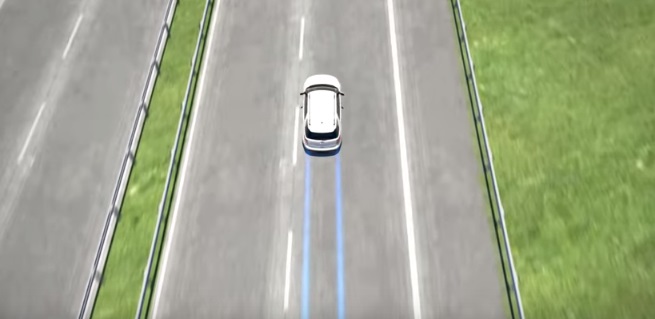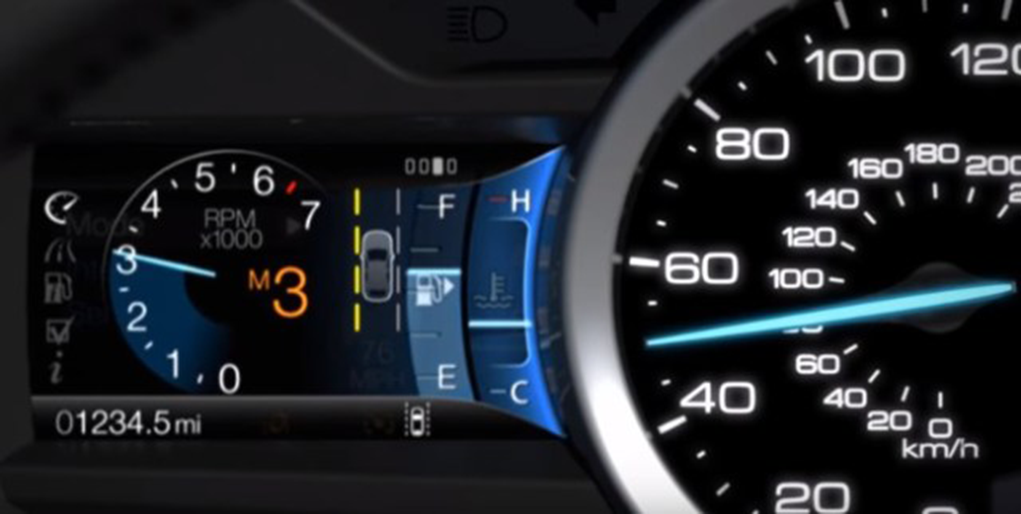According to the World Health Organization, road traffic injuries kill more than 300,000 people per year in Southeast Asia and account for 25-percent of all traffic deaths globally. In the Philippines, 56-percent of road fatalities are among vulnerable road users: pedestrians, cyclists and motorcyclists.
While there are several factors contributing to the problem—traffic congestion, lack of safety education and less than ideal road conditions—most accidents are simply a result of reckless driving and failing to comply with traffic laws.
In cities like Manila, where traffic can also come to a standstill, it is common to see motorbikes riding on sidewalks meant for pedestrians or driving down the wrong way down one-way streets. More troubling, it is not unusual to see three or four people on a single motorbike.
A number of auto companies have developed new car-safety technologies that when applied help make the roads safer for everyone. American car maker Ford is developing a spot lighting technology that uses an infrared camera to help detect pedestrians, cyclists and animals. The company’s Camera-Based Advanced Front Lighting can help the driver when travelling in an unfamiliar area at night. For example, at roundabouts, it can make it easier to see exits, and spot whether unexpected hazards—like cyclists or pedestrians—are crossing the road.
Bert Lessard, Managing Director of Ford Philippines, said, “We recognize that driving in the Philippines can sometimes be a challenge, that’s why we continuously work to equip our class-defining vehicles with smart and safe features and technologies to help keep our customers safe in their daily journeys, especially when driving with motorbikes around.”
Technology offers part of the solution

With the safety of everyone in mind, Ford has the Lane Keeping System in the Ford Everest and Ford Explorer. The system uses a camera mounted behind the windshield’s rear view mirror to monitor road lane markings and detect unintentional drifting toward the outside of a lane. If the camera detects an impending unintentional drift, the driver is warned in the instrument cluster display, and with a steering wheel vibration, it helps the driver keep the car in lane, avoiding bikers or other vehicles travelling in other lanes.
Meanwhile, the Ford Everest and the Ford Explorer offer the BLIS (Blind Spot Information System) and BLIS (Blind Spot Information System) with Cross-Traffic Alert respectively, which work in combination with Ford’s other parking assistance technology such as rear-view cameras or 360-degree cameras. CTA uses two radar sensors to monitor the area behind and on either side of the vehicle while the transmission is in reverse. These systems use the audio system and the instrument cluster display to warn the driver if pedestrians, cars or motorbikes are detected.
More regulations from traffic authorities
Governments in the region have made efforts to help reverse the trend of road fatalities, including improving safety standards, such as the introduction of mandatory helmet laws. However, some governments have proposed bans that most people think go too far and will have many serious implications for residents.
In the Philippines, there are ongoing discussions about how the Metropolitan Manila Development Authority (MMDA) is considering banning motorbikes from EDSA, one of the main thoroughfares in the country, to curb the number of vehicles and road crash accidents that happen every year.
While there continues to be debate about these kinds of proposed restrictions, making the roads safe for all drivers and riders will take a range of measures—from increased driver education and improved roadways to new technologies that will keep cars safer for passengers.
Check out their video:
https://www.youtube.com/watch?v=CEhixcfBBeo

